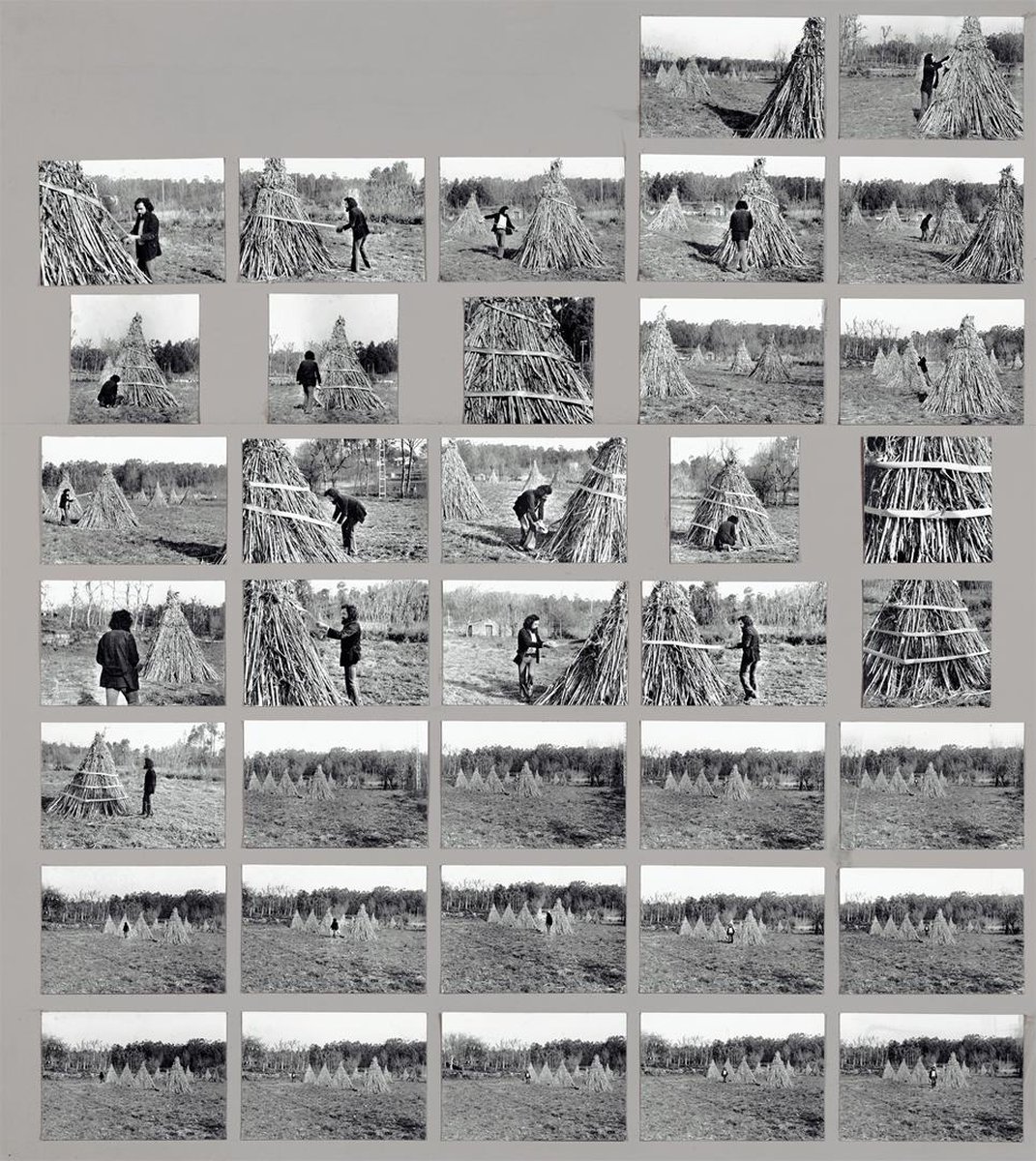Registo de uma intervenção na natureza, 1973, by Alberto Carneiro is a sequence of photographs that belongs to the Collection Caixa Geral de Depósitos (CGD). This work is highlighted as it is on loan to the collective exhibition Cravos e Veludo – Arte e Revolução em Portugal e na Checoslováquia (1968-1974-1989) curated by Adelaide Ginga and Sandra Baborovska open at MNAC, Museu Nacional de Arte Contemporânea, Lisbon, from 19 July to 27 October 2024.
Born in a village in the borough of Trofa in 1937, Alberto Carneiro soon learned the saint-maker craft in São Mamede de Coronado’s sacred art studios, where he worked from 1947 to 1958. He attended Escola de Artes Decorativas Soares dos Reis, Porto, and Escola Artística António Arroio, Lisbon. Between 1961 and 1967, he studied sculpture at Escola de Belas-Artes, Porto, and subsequently at Saint Martin's School of Art in London as a scholarship student from the Calouste Gulbenkian Foundation between 1968 and 1970. In London he came into contact with avant-garde art, namely Land Art and Conceptual Art. Further to his artistic activity, he also devoted himself to studying Deep Psychology, Zen, Tantrism and Taoism. It is by combining his initial interest in woodworking and natural materials with his intellectual curiosity about Eastern philosophy, that his work expressed the profound relationship between body, spirit, nature, experience and art. Carneiro’s work reveals itself to be a quest “for the absent body, for that body that, one day (if ever) could complete the next one.” (Delfim Sardo)
While living in London, on 12 December 1968, Carneiro had an “epiphany” (Anabela Mota Ribeiro) and gained “the awareness that there was no separation between life, my daily life, its essence, and my work. I decide to go back to my life experience, by exploring my childhood world and my bond with nature.” (A. Carneiro). He returned to Portugal in 1972 and in the following year he created Registo de uma intervenção na natureza. The work is a sequence of 37 black and white photographs that record the intervention that the artist carried out in a rural, open-air place in Vale do Paraíso, Vila Nova de Gaia. The action consisted of a path taken by the artist that had been formally marked with a pre-defined number of steps (75+29+29=133). Along this path he established 9 or 10 locations identified with 250 cm high straw and corn stalks measures. Subsequently, he binded these pieces describing a spiral movement with wicker strips, and everything, including the artist's physical presence in the landscape, is documented photographically. This intervention shapes nature into natural forms and bodies that create a new sense of the landscape.
He taught sculpture at Escola Superior de Belas-Artes, Porto, between 1972 and 1976, at Círculo de Artes Plásticas, Coimbra, 1972 to 1985, and at Faculdade de Arquitectura, University of Porto, 1985 to 1994. He was awarded the AICA/SEC Prize in 1985. From 1991 onwards, he held the Santo Tirso International Contemporary Sculpture Symposia, which were the precursors to the foundation of the International Museum of Contemporary Sculpture opened in 1996. In 2002 he created the International Contemporary Sculpture Park in Carrazeda de Ansiães. In 2015, he was awarded the Amadeo de Souza-Cardoso Grand Prize (Consecration). He passed away at Hospital de São João, Porto, in 2017, where he was being cared for a long illness. The Alberto Carneiro Art Centre, Santo Tirso, opened to the public in November 2021 following a donation of works made by the artist before his demise that were destined to form the Centre’s Permanent Collection.
Hugo Dinis
79 x 70 cm
Inv. 422036


